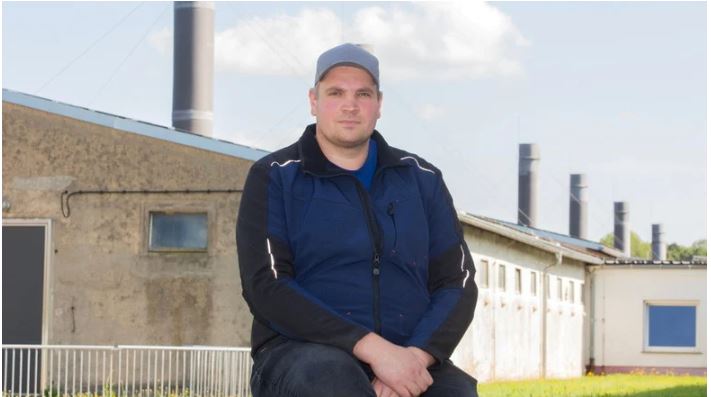From Tim Ruben Weimer
Bautzen. African swine fever is on the retreat in Saxony; in August 2023, only ten new infections with the virus were detected among wild boar in the Free State. All ten cases come from the municipalities of Lauta and Elsterheide in the northern district of Bautzen, the counties of Görlitz and Meißen have had no cases of swine fever for almost three months.
But the plague has had a serious impact among pig farmers: As of mid-August 2023, for example, 101 of the original 247 pig farms in the Bautzen district have given up their operations, the largest of which is the Klixer Edelfleisch company from Großdubrau. Since the outbreak of the disease in 2020, the number of pigs kept has fallen from a total of around 60,000 to 50,000 animals.
Pig farming pays off again
André Pietsch, who is responsible for pig farming at the agricultural company Budissa Agrarprodukte in Niederkaina, reports that supply chains have broken down as a result of the swine fever. One of two sow breeding facilities, each with around 750 pigs, was closed in October 2022, and the company temporarily relocated its young sow breeding facility to Lutherstadt Wittenberg and thus out of the ASF zone.
In the meantime, however, the situation has changed, says Pietsch. It is once again worthwhile to keep pigs. This is due to the fact that the pig market was swept clean after the low sales prices in 2022, and many farms had given up. Meanwhile, more slaughter plants would also accept pigs from ASF areas. "We've dragged ourselves through the crisis, the whole industry has lost a lot of money, but now we're looking cautiously ahead."
Good prices for piglets, but costs remain high
Christian Schmidtgen from the sow breeding facility in Nebelschütz also says this. He had to decimate the sow herd from 2,000 to 600 animals in mid-2022 because he was making a loss of around 50 euros per piglet. He does not expect to be able to fully ramp up the plant again, he said, despite the fact that the price of a piglet is now back at 80 euros, just above the all-time high of 75 euros before the ASP outbreak in 2020. This is because the costs of feed, wages and energy remain high.
Cooperation with the veterinary office, whose employees regularly take blood samples from his animals and check the sealing of the vehicle each time it is exported, runs smoothly. However, the office also charges fees, for example, for each exemption issued that allows him to export live animals from the area.
New requirements for pigsties still unclear
"I'm still sticking to pig farming because we can live very well with the current conditions," says Schmidtgen. His goal is to keep a larger part of the value chain on his farm in the long term and thus no longer be dependent on middlemen and expensive transports. One possibility, for example, is to build his own fattening facility on the freed-up barn space.
But for that to happen, the future legal requirements for the stables would first have to be clear. "The conversions that are probably required of us are not financially viable, and the funding options are also clear," says Schmidtgen. "The conversions can be about an inch too much or too little, which would then require deconstruction." Therefore, the motto: wait until the specifications are clearly formulated.
Farms subsidize pig breeding
The new editions are about, that in the future possibly only the pigs from the husbandry forms 3 and 4 are to be marketedexplains Thomas Schneeweiß from the Qualitätsfleisch producer group in Taubenheim near Klipphausen, which also has members in the district of Bautzen. At husbandry level 3, the pigs must have contact with the outdoor climate; at husbandry level 4, they need a permanent outdoor run.
The situation is currently very uncertain, he said, so many farms are reluctant to invest and are keeping pig farming afloat with cross-subsidies from other areas of the farm. Those that have given up were mainly small farms that were completely dependent on pig marketing.
On average 15 cents less for meat from ASP areas
Subsidizing oneself makes no sense, says Thomas Adler from the agricultural cooperative in Großröhrsdorf. Since May 2022, he has temporarily stopped his pig farming, but is keeping open the option of rebuilding it if the ASF exclusion zone 2 is downgraded to a buffer zone. The effort with high transport costs to the Tönnies slaughterhouse in Kellinghusen north of Hamburg was too high, moreover, he received only 50 cents per kilogram for the pigs, which were getting fatter and fatter due to the slaughter congestion. Currently, the price is back at 2.30 euros.
"We're doing great," says Erik Thijsen, owner of 1,600 breeding sows and 2,000 fattening pigs in Grüngräbchen. He is now making a profit again and has not had to cut back production at any time. On average, however, he receives about 15 cents per kilogram less for his pigs because they come from an ASF area. He is therefore calling for more support for pig farmers. "Right now, it's not hurting us because profits are high," he says. "But there will come times again when the 15 cents can be crucial."








